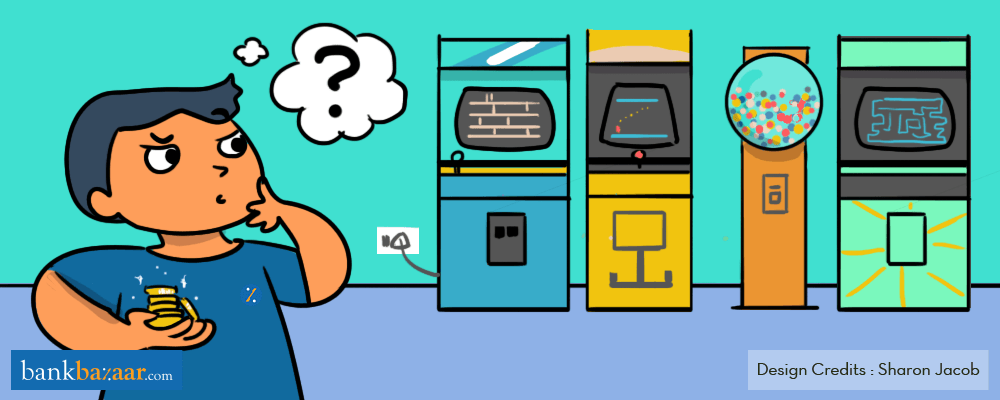
A Fixed Deposit (FD) is a conservative product and is generally preferred by senior citizens. The elderly view FDs as a long-term product and, on an average, invest for a term of 5 to 10 year. As interest rates have been falling, there is a need to earn more. Don’t worry, there is a way out! You can enhance the returns from your current FDs without closing your FD accounts. This can be done by reinvesting your interest proceeds. Also, if you are using your fixed-income returns only for contingencies, it makes sense to reinvest your returns.
There are several options available but only some ensure liquidity as well as good returns. For instance, you can invest the FD interest in National Savings Certificate (NSC) and Public Provident Fund (PPF) that are covered under Section 80(C) of the Income Tax Act. But your money will get locked in. That’s why you need to carefully choose your investments based on your needs, risk profile and financial situation. Here, we provide you with some options.
Additional Reading: Everything You Need To Know About Fixed Deposits
You are getting a monthly interest payout from your FD…
If you are not planning to use the monthly interest on your FD, it just remains idle in your Savings Account. Instead, you could consider investing in the following options for better returns.
Bank RD
You can invest the monthly interest that you receive from your FD, in a Recurring Deposit (RD) scheme of a bank. Suppose you invested Rs. 1,00,000 in a 10-year FD at the rate of 9%, one year ago and you are getting monthly interest. Can you reinvest this income to earn more? Of course, you can, by reinvesting it in an RD.
From your current FD, you will be receiving Rs.745 as monthly interest. This is because of the discounted rate calculated by banks. If you invest Rs. 500 from your interest, in an RD for five years, you will be receiving Rs. 54,303 at the end of the period. This is assuming that you invest at the rate of 7.5% per annum. That means you would have earned an interest of Rs. 9,602. If you had kept the amount in your Savings Account, you would have earned only Rs. 4,500 as interest.
Advantages
- Same interest rate as FD (higher rates for senior citizens)
- Fixed amount to be invested every month
- Choice of duration
- Overdraft facility available
- No Tax Deducted at Source (TDS)
Disadvantages
- No tax breaks
You are getting an annual interest payout…
Corporate deposits
If you receive an annual interest payout, you can consider investing your interest proceeds in a corporate deposit. You can invest in one year and two-year corporate deposits and ladder your investments.
Suppose you invested in a 10-year FD last year at 9%, you would be receiving Rs. 9,300 as interest. If you invest this in a one-year corporate deposit earning 10% and keep laddering for five years, you will have earned Rs. 5,938 as interest at the end of the period and you needn’t worry about credit risks if you invest in rated securities. You also have the option to review the deposit and invest in better options at the end of every year.
Advantages
- Higher interest rate when compared to Bank FDs
- Choice of monthly, quarterly, half yearly and annual interest payouts
- No Tax Deducted at Source (TDS) if interest is less than Rs. 5,000
Disadvantages
- No tax breaks
- Less liquidity when compared to bank FDs
- Higher credit risk
- Need to keep track of ratings and company performance
National Savings Certificate (NSC)
You can invest your annual interest payout in NSC every year and keep laddering through the years. Taking the above example, suppose you invest the Rs. 9,300 interest in NSC, at the end of six years, you will receive Rs. 4,555 as interest and Rs. 13,855 as maturity value. If you invest every year, you will get a lump sum of Rs. 13,855 every year from the sixth year onwards.
Advantages
- Lower risk when compared to traditional debt products like bank FDs
- Low minimum investment
- Tax deduction under Section 80C
Disadvantages
- Fixed maturity period
- Less liquidity when compared to bank FDs
Points to note
Before reinvesting FD interest
- Ensure that the instrument has adequate liquidity
- Choose investments that have returns decent after tax
- Choose shorter tenures. This way you can keep reviewing your investments and make informed decisions about reinvesting
- Base your decision on your needs and financial situation.
Pre-tax returns
| FD interest invested | Instrument for reinvestment | Interest rate offered | Interest earned |
| Rs. 745 per month | Recurring Deposit | 7.5% | Rs. 9,602 |
| Rs.9300 | NSC | 8% | Rs. 4,555 |
| Rs.9300 | Corporate deposit | 10% | Rs. 5,938 |
*The tenure is assumed to be 5 years and compounding quarterly, for RD & corporate deposit.
Post-tax returns
| FD interest invested | Instrument for reinvestment | Interest rate offered | Interest earned | Tax bracket | ||
| 10.30% | 20.60% | 30.90% | ||||
| Rs. 745 per month | Recurring Deposit | 7.5% | Rs. 9,602 | Rs.8032 | Rs.7136 | Rs.6187 |
| Rs.9300 | NSC | 8% | Rs. 4,555 | Rs.5014 | Rs.4438 | Rs.3863 |
| Rs.9300 | Corporate deposit | 10% | Rs. 5,938 | Rs.5229 | Rs.4629 | Rs.4028 |
*The tenure is assumed to be 5 years and compounding quarterly, for RD & corporate deposit.
Ready to invest your interest income to earn a ton? Or are you still looking for that Fixed Deposit? In that case, you know where to go.